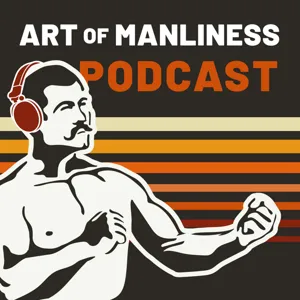Podcast Summary
Life in the Garbage Patches: Unique organisms, like the porpida jellyfish, inhabit garbage patches and contribute to the ocean ecosystem
Despite the overwhelming presence of ocean pollution in the form of garbage patches, there is still life thriving in these areas. Researchers like marine biologist Fiona Chung are discovering unique organisms, such as the porpida, a bright blue jellyfish-like creature, that call the trash piles home. These organisms play a crucial role in the ocean ecosystem, feeding on plankton and crustaceans amidst the plastic debris. The North Pacific garbage patch, the largest of these floating soup-like collections, spans an area twice the size of Texas and three times the size of France. While it's a daunting image, it's essential to remember that these areas are not wastelands but rather complex ecosystems with unique inhabitants. The Schizophrenia and Psychosis Action Alliance encourages us to remember that people with schizophrenia can also thrive and recover, just like these organisms in the midst of adversity.
A thriving ecosystem within the Great Pacific Garbage Patch: The Great Pacific Garbage Patch, while harmful, also hosts a diverse ecosystem, complicating cleanup efforts and emphasizing the importance of balancing marine pollution management with ecosystem preservation.
The Great Pacific Garbage Patch, while a significant source of harm to marine life through entanglement and ingestion, also serves as a habitat for various organisms. Scientists have discovered a thriving ecosystem within this patch, with species such as the by-the-wind sailor, a blue, floating hydroid with a sail-like structure, being quite common. This discovery complicates efforts to clean up the area, as removing plastic could also eliminate these habitats and disrupt the food web. This highlights the need for careful consideration in managing ocean plastic pollution and preserving the delicate balance of marine ecosystems.
Exploring the marine ecosystem: Drift Algae and Blue Button species: Drift Algae use sail-like structures to move with the wind, while Blue Button organisms form symbiotic relationships with fish, showcasing the intricacy of the marine food web.
The ocean is home to fascinating and interconnected organisms, such as the Drift Algae (Sargassum) and the Blue Button (Porphyra) species. These organisms have unique adaptations for survival in their marine environment. Drift Algae have a sail-like structure to catch the wind and move through the water, while Blue Button organisms are circular discs with tentacles that catch food and form symbiotic relationships with small fish, providing them protection. These observations demonstrate the complexity and intricacy of the marine food web, where different species depend on each other for survival. For instance, the Johnthyna snail preys on some of these organisms. These discoveries not only broaden our understanding of the marine ecosystem but also highlight the importance of preserving these delicate and intricate relationships.
A complex ecosystem thrives in the Great Pacific Garbage Patch: The Great Pacific Garbage Patch is home to a diverse range of organisms, including predators and prey, and supports feeding, spawning, and mating. However, this ecosystem exists in a harmful environment with risks from microplastics and garbage.
The Great Pacific Garbage Patch is not just a collection of plastic waste, but a complex ecosystem teeming with life. This includes organisms like the Glaucus atlanticus, a blue sea slug that preys on other Newstone organisms, as well as being preyed upon by larger marine life and birds. The high concentration of organisms in the middle of the patch, where currents converge, allows for feeding, spawning, and mating to occur more frequently. However, this ecosystem exists within a dangerous environment, with microplastics and garbage posing significant risks to marine life through entanglement and ingestion. This research highlights the importance of addressing both the ecological complexities and the harmful consequences of the garbage patch, emphasizing the need for comprehensive ocean cleanup efforts.
Impact of Plastic in the Ocean: Harmful Consequences: Plastic in the ocean harms marine life, requires complex cleanup processes, and necessitates collective efforts to prevent and reduce plastic waste.
The presence of plastic in the ocean, particularly in areas like the Great Pacific Garbage Patch, is a significant issue with far-reaching consequences. Humans' impact on the ocean is unfortunate, and plastic in the patch can harm various marine organisms, including sea turtles, seabirds, and sunfish. If not cleaned up properly, the plastic will continue to break down into smaller pieces, making it even harder to remove and potentially entering the food chain. Moreover, the cleanup process itself can disrupt ecosystems. Therefore, it's essential to find better ways to clean up the ocean or, ideally, prevent plastic waste from entering it in the first place. On a personal level, we can all be more conscious of our waste and support improved waste management systems. Additionally, cleanup efforts should focus on areas closer to land to minimize carbon emissions. Ultimately, addressing the plastic waste problem in the ocean requires a collective effort from individuals, governments, and organizations.
Fishing Industry's Role in Great Pacific Garbage Patch: The fishing industry contributes significantly to the Great Pacific Garbage Patch through practices like bycatch and lost fishing gear. Addressing this issue requires changes in the industry, cleanup efforts, and disposal methods for garbage.
The Great Pacific Garbage Patch is not just a collection of plastic waste but also includes discarded fishing gear, which contributes significantly to the overall problem. The fishing industry plays a role in the accumulation of this waste through practices like bycatch and the loss of damaged nets in the ocean. To address this issue, changes are needed in the fishing industry, prioritization of cleanup efforts, and disposal methods for garbage. Fiona Chung, an expert in this field, emphasized the importance of acknowledging these complexities and taking action accordingly. Additionally, I wanted to share some personal news - I will be taking a break from Shortwave to work on a new podcast for NPR member station LAist. In the meantime, Regina Barber and Aaron Scott will continue to bring you the latest science reporting on Shortwave. Don't forget to check out Fiona's paper for more information and stunning images of the sonic life in the Great Pacific Garage Patch. This episode was produced by Carly Rubin and Berly McCoy, edited by Rebecca Ramirez, and fact-checked by Margaret Luthar. Thank you for your support of Shortwave from NPR. Enbridge, a company dedicated to delivering energy safely and reliably, is investing in renewables and lower carbon solutions to bridge to a sustainable energy future. For more information, visit tomorrowison.com.
Affordable premium wireless plans from Mint Mobile starting at $15 a month: Mint Mobile offers affordable premium wireless plans starting at $15 a month. NPR's 'Black Stories, Black Truths' podcast celebrates black experiences and amplifies underrepresented voices.
Amidst rising inflation, Mint Mobile is providing an affordable solution for premium wireless plans, starting at just $15 a month. This offer can be accessed by visiting mintmobile.com/switch. Another important takeaway comes from NPR's "Black Stories, Black Truths" podcast. This collection of stories celebrates the richness and diversity of the black experience, highlighting the importance of acknowledging and amplifying underrepresented voices. In a world where some truths aren't self-evident, this podcast serves as a reminder of the soul and depth of the black experience.




